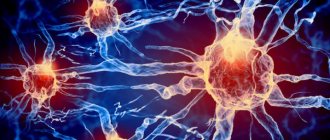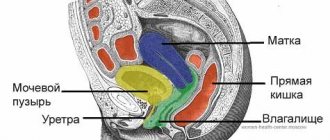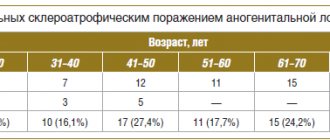The male reproductive system is extremely important, like the rest of the body systems that ensure normal functioning. Therefore, failure to contact a specialist in a timely manner, or, even worse, ignoring warning signs, creates much greater problems than they were initially.
The male reproductive system has three main tasks:
- The formation of sperm in the testes (spermiferous tubules). During one ejaculation, 30-500 million sperm are released.
- Evacuation of seminal fluid from the male genital organs and its delivery to the female genitals.
- Synthesis of the main androgen (a group of male steroid sex hormones) - testosterone.
Structure and functions of the external male genitalia
The group of male external reproductive organs includes:
- Penis (penis) is an organ involved in sexual intercourse, ejecting seminal fluid. The place of attachment of the phallus to the pubis is the root. The body of the penis and the head are covered by the foreskin (fold of skin), which normally should be easily and painlessly retracted, exposing the head. The foreskin contains multiple glands that produce smegma (sebaceous lubricant). Inside, the penis consists of two cavernous (cavernous) and one spongy (spongy) bodies. It is to the cavernous bodies that a man owes the appearance of an erection, in which the bodies are filled with blood and “swell”, increasing the size of the penis. The corpus spongiosum contains the urethra (urethra), which blocks the passage of urine during coitus and ejaculation.
- Testicles (testicles) - olive-shaped paired organs of different sizes produce testosterone and sperm. They are located in the sac (scrotum), which acts as a “climate control”. For healthy spermatogenesis (sperm production), the testicles must be maintained at a constant temperature below the general body temperature. This is provided by the scrotum and the external location of the testicles. Otherwise, spermatogenesis will be impaired, which will negatively affect fertility (the ability to conceive).
- The epididymis is an oblong narrow paired organ, part of the vas deferens. In the epididymis, sperm accumulate and mature for further movement into the vas deferens. Sperm accumulate in a thickening formed in the tail. In the scrotum, the epididymis is adjacent to the testicle, forming a pouch. Normally, it can be easily felt through the scrotum.
What is the size?
Male penis size is a characteristic of the male penis in terms of length and width.
Thread on the forum where we discuss size - https://forum-makarova.ru/malenkij-razmer-chlena.t1559/
**Do you want to know everything about men's health? Streams on Tuesdays and Saturdays!** **Personally from Dr. Makarova! Join the chat so you don’t miss out!* — https://t.me/makarovamama
It is considered correct to measure the length of the penis - in a standing individual by placing a ruler on top of a fully erect penis, width - in several places with averaging. The documented largest penis is considered to be a penis with a length of 33.5 cm and a girth of 15 cm, which was described at the beginning of the 19th century. According to a number of studies, the average length of the penis is about 13-15 cm. And although the issue of women’s preferences is controversial, at all times the issue of increasing the size of the penis has received special attention.
Internal male genitalia
The main internal male organ is the nut-shaped exocrine androgen-dependent prostate gland, located in the center of the pelvis near the bladder. The function of the gland is to control urination, erection, ejaculation, ensure the viability of sperm and their transportation.
The secretory and barrier functions of the prostate are distinguished. The gland produces its own secretion, which enters the sperm during ejaculation. The secretion contains enzymes, acids, immunoglobulins and other trace elements. The secretion also contains immune factors that allow the prostate to perform a barrier function, which is to prevent the penetration of pathogenic microflora from the urethra into the urinary tract and to prevent the spread of microorganisms from the urethra to the vas deferens. The presence of zinc ions in the secretion protects the male reproductive tract from infection. The work of the gland is controlled by pituitary and steroid hormones, estrogens.
The internal male genital organs also include:
- Vas deferens - their task is to transport ejaculate to the urethra, which can also be classified as a reproductive system. The ducts originate from the appendages of the testicles.
- Seminal vesicles - produce the fluid that makes up sperm. The secretion of the vesicles, containing a large amount of fructose, is “responsible” for the vital energy of sperm.
- Bulbourethral glands - tiny Cooper's glands, about the size of a pea, are located next to the prostate and secrete secretions into the urethra. The secretion of the glands lubricates the walls of the urethra and neutralizes the acidity of urine.
Results of studies on the size of male penises
Do you want to become a real man!? - Press!
How much should it be in cm?
Research on the optimal length (13.8 cm) in our separate article -
Although research results vary markedly, most experts in the United States agree that the average male penis is approximately 13-15 cm (5.1-5.9 inches) in length. At 95% confidence level this equals 10.7 to 19.1 cm (4.23 to 7.53 inches). The typical girth or circumference at full erection is approximately 12.3 cm (4.85 inches). The average size of a man's penis is slightly larger than his median size. The following results are based on measurements taken primarily in the USA.
Hormones that regulate the function of the male reproductive system
The function of the reproductive system in men is regulated by three main hormones:
- Luteinizing (LH).
- Follicle stimulating agent (FSH).
- Testosterone.
LH and FSH are pituitary hormones. Testosterone is synthesized under the influence of LH, sperm are formed under the influence of LH. Testosterone is responsible for the timely appearance of secondary sexual characteristics, seminal fluid production, muscle building, physical strength and endurance, libido, and voice pitch.
The function of hormones in the male reproductive system
Penis size and condom use
The sizes of condoms differ only in width (diameter), their length is usually standard, and is set by manufacturers from 170 mm: S – width from 42 to 46 (the smallest condom size); M – diameter up to 52 (medium); L – width from 54 (large, oversized condoms); XL, XXL, or Extra Large – diameter from 62 (very large). (Russian standard - length is from 178 mm, and width from 54 mm).
Condom rupture has been the subject of several studies. 92 monogamous heterosexual couples aged 18 to 40 years for women and 18 to 50 years for men were included in the upcoming Durex-Ramses condom study. At each sexual intercourse, a diary was kept, which included information about the use of a condom, its rupture and slippage. In France, a telephone survey of 20,000 random individuals involved 4,500 sexually active people, of whom 731 had used a condom in the previous year and 707 reported difficulties using condoms. A study in Australia in which 184 men used 3,658 condoms also looked at penis size as a factor in condom breakage and slippage.
Although the most common type of condom is made from latex and is highly stretchable, it is susceptible to dry friction (such as the dry friction movement of friction when heavy pressure is applied or there is no smooth, lubricated movement), as well as other errors in their use. In a separate study, for example, among people who had anal sex, condom breakage was more related to excess friction (in this case, the result of insufficient lubrication) than to penile size itself. The condom breakage rate when used correctly was 1.34% and the slippage rate was 2.05%, for an overall failure rate of 3.39%. Penis size had no effect on slippage, but penis circumference and condom breakage were highly correlated, with larger sizes increasing the breakage rate.
Currently, the problem of condom sizes seems far-fetched. Thus, in the USSR condoms were produced in three sizes: No. 1, No. 2, No. 3, which differed in size. The size No. 1 condom was gradually forced out of sale because it was not in demand - presumably due to the reluctance of men to admit to the smallest size. Condom No. 3 was forced out of production due to the reluctance of the planned economy to waste rubber unnecessarily. “Product No. 2” remained in use - and it was 54 mm wide and 180 mm long, which corresponds to the European size XXL. The production material was rubber. Currently, condoms are most often made from latex, but are not made from rubber at all. Since latex tends to stretch significantly, unlike rubber, the question about the size of the condom is most likely nominal.
Based on materials from Wikipedia - https://u.to/RmFRDg
Sperm formation
Spermatogenesis (production of seminal fluid) is carried out under the influence and control of hormonal substances. It begins at the moment of puberty (11-15 years), therefore, until this age, sperm are not produced in the boy’s body. When testosterone reaches age-appropriate levels in a teenager, this leads to the activation of stem cells in the testicles (spermogonia). Spermogonium is transformed into spermatocytes containing a double chromosome set. Spermatocytes divide, in turn forming secondary spermatocytes, which contain one set of chromosomes.
Spermatocytes are then transformed into spermatid cells, which undergo spermiogenesis (the final stage of spermatogenesis). Spermatid cells turn into spermatozoa, which mature in the epididymis. Once mature, the sperm are ready to fertilize the egg. The speed of sperm movement is 20 cm/h with a length of only 0.05 mm.
Indicators of ejaculate quality. Norm and pathology
Measuring a man's penis
How to measure the length correctly?
In order to take an accurate measurement, the penis must be fully erect.
This may be difficult to achieve in a medical setting. At least one Brazilian doctor resorted to injecting drugs into the penis to induce a full erection, which produced more permanent results.
Some clinicians measured the penis by stretching it in a non-erect state as far as possible. Men's self-measurement of their penises is unreliable because they often want to report a larger penis.
To obtain the most accurate measurements of an individual's penis size, it is recommended that multiple measurements be taken on different days and at different times, preferably with different erections. After this, the results obtained are averaged. This approach accounts for what may be natural fluctuations in size due to level of sexual arousal, time of day, room temperature, frequency of sexual activity, and unreliability of measurement methods.
Measuring the length (from above) and width of the penis.
The length can be measured with a standing individual when the penis is parallel to the floor. The penis is measured along the upper surface from the base of the penis to its tip. The results are considered inaccurate if measurements were taken along the lower surface of the penis, as well as if the individual was sitting or bent over.
Penis girth
- This is the measurement of the circumference of the penis in a state of full erection. With variations, this is quoted as the average of three measurements: just below the glans penis, in the middle of the shaft, and at the base of the penis.
Menopause in men: myth or reality?
Menopause or menopause is the cessation of activity of the female reproductive glands (ovaries), as a result of which menstruation completely stops. The reason for this is the cessation or significant decrease in the production of estrogen by the ovaries. Men never stop producing testosterone and any man can theoretically become a father in old age. Exceptions include severe illnesses or congenital abnormalities that affect spermatogenesis and erectile function. With age (from 35-45 years), testosterone production begins to decline, and fertility decreases accordingly. By taking a testosterone test, men have the opportunity to evaluate their health.
A decrease in the production of male sex hormones occurs under the influence of various factors: endocrine diseases, obesity, chronic diseases, STDs, stress, constant overheating of the testicles in saunas, baths, frequent hypothermia, depression, injuries, accidents (electric shock, road accidents) and so on. Exposure to unfavorable factors leads not only to a decrease in testosterone production, but also to erectile and ejaculatory dysfunction.
The most common hormone-dependent ovarian diseases include:
- hypogonadism is a pathological condition manifested in the production of insufficient amounts of female sex hormones by the ovaries.
- amenorrhea with normally developed sexual characteristics - absence of menstruation due to a lack or excess of gonadotropic hormones - FSH and LH.
- amenorrhea with androgen excess
- hirsutism is a male type of skin hair growth in women. It manifests itself in the growth of hair on the face, chest, abdomen, back, around the nipples of the mammary glands and on the thighs.
The most common symptom of abnormalities in the structure or functioning of the ovaries is menstrual irregularities. They manifest themselves in the complete absence of discharge - amenorrhea, a change in their quantity, and in different shifts in the timing of the next menstruation. Amenorrhea is not an independent disease, but a symptom of a disease affecting the organs of the reproductive and endocrine system. To effectively treat such conditions, a thorough diagnosis is necessary, the purpose of which is to establish the true cause of the disease. This requires consultation with doctors of two specialties - a gynecologist and an endocrinologist.










